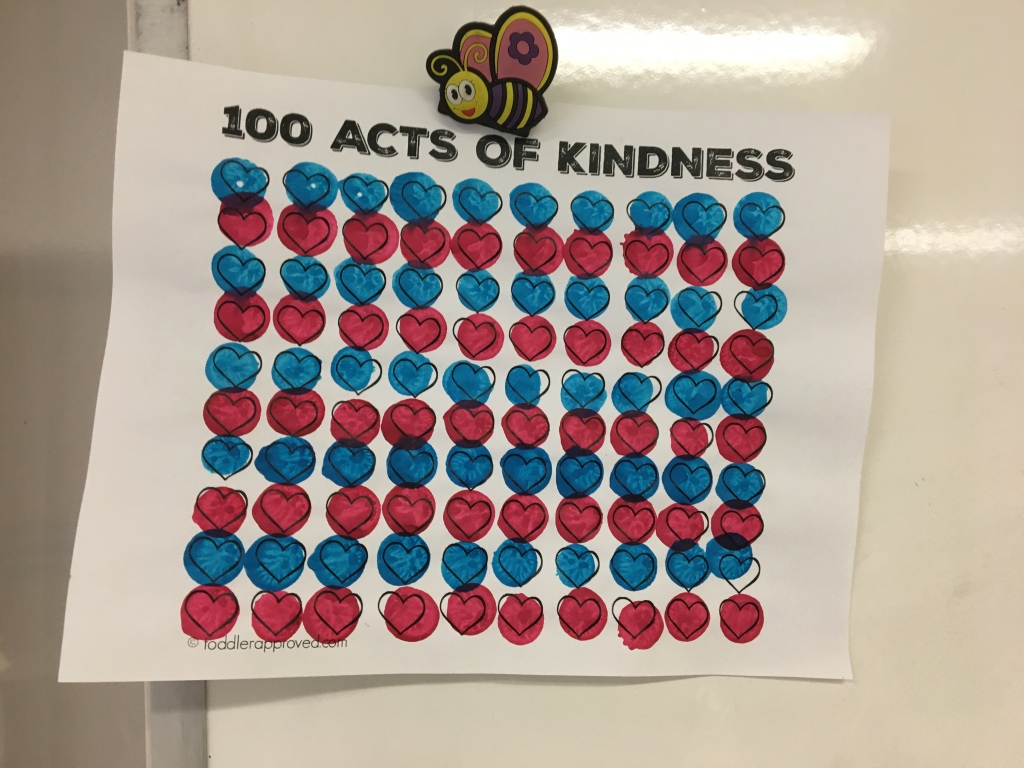We started keeping track of our own acts of kindness about 2 weeks ago. We needed to know of what it really means to be kind, and conscious of when we were actually doing it.
To help us out, I printed a sheet of 100 hearts. Our goal was achieved in only 6 school days!

Of course I found a way to add some math. There are ten hearts in each row. Initially I coloured in 5 hearts with one marker and the other 5 in another colour. We were counting by 5s and it was all going well until someone decided to put us on the fast track and do some covert colouring of hearts.
For the second attempt I switched to bingo daubers and counting by 10s. At first only one child was counting the hearts…both up and down. “We have 12, so 88 to go!” They’d say. Then more kids jumped in and every time I’d colour in a few (they always had many acts of kindness to report after recess) more and more kids would help with the running total, as well as the number remaining. They’ve been less than enthusiastic about lots of the math we’ve done, so I was excited that they got excited about this.
Of course we had to keep going. Today I added more hearts to our new chart. The filled chart was behind it. “How many do we have now?” I asked. They all agreed we had seven. “I disagree I said. They started to try to convince me I was wrong. It was good to see they are learning some math reasoning skills, but I was right. I pulled out our filled chart and put them side by side. “I think we have 107,” I said.
They had no choice but to agree with me.
I can’t wait to see where this goes tomorrow.
It also helped them become more aware of opportunities to help out. Someone dropped crayons one day and I made a big deal out of adding some hearts for the helper. I truly don’t know if they had ever considered helping a classmate out, especially for a chore like cleaning. I’m happy to report this type of thing has become more common for us.


You must be logged in to post a comment.